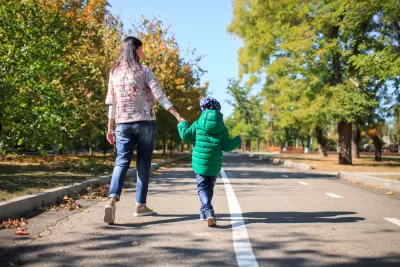Cities are economically diverse and require accessible health care systems, but this can be challenging to implement. Urban developers are working alongside health professionals to create affordable care for city residents.

Urban developers and planners are working alongside health professionals to create affordable care for city residents. Cities are economically diverse and require accessible health care systems, but this can be challenging to implement. Professionals are identifying links between health and urban development to come up with sustainable solutions.
Urban regions struggle with obesity, infectious diseases, climate change, gun violence, and minimal care access. Community developers and health care workers hope to improve society’s well-being while reducing the cost of care. Developers can minimize these health issues by using strategic planning methods.
The Social Elements of Health
The first step for community developers in planning structural advancements is evaluating the social elements of health. Economic stability is one of the most significant influences on one’s health and well-being. In the United States, nearly one in 10 people experience poverty. They struggle to pay medical and health insurance bills without sufficient funds.
The environment also impacts public health. Many cities have high air pollution levels, which increases residents’ risk of respiratory illnesses. Urban transportation sectors also affect individuals’ health and well-being. Residents who live far from bus stops or train stations may struggle to access medical care.
Using Bottom-up Tactics
Planners are targeting the social determinants of health with bottom-up development tactics. One of the first steps to developing care-compatible infrastructure is creating affordable housing. Stable residential environments can reduce morbidity rates. Developers should also design homes with proper ventilation to minimize the spread of airborne diseases.
Planners can also improve residents’ health and well-being by creating a clean and efficient transportation system. More than 18 percent of U.S. citizens live 10 miles or more from a hospital. Improving their access to care facilities can reduce health issues.
More walking and biking paths throughout cities could also improve residents' health. Access to parks and trails can reduce people’s risk of diabetes, cancer, heart disease, stroke, and mental health complications. They may also help individuals travel to appointments and errands safely and efficiently.
Advancing Supportive Technologies
Health care workers can improve care in high-volume facilities using automated technologies. Urban hospitals and medical centers experienced staffing limitations during the COVID-19 pandemic, with many patients experiencing care limitations as a result, which decreased regional health and well-being. Adding automated technologies to medical facilities can increase data entry efficiencies. It also may lower staff members’ burnout.
City developers can also include smart technology in medical transportation planning. These systems can improve emergency response times by autonomously closing roads and changing lights to slow traffic when needed, allowing emergency response vehicles to reach individuals quickly.
Using drones to assess situations before approaching people needing help can assist emergency response personnel in assessing and planning for situations ahead of time. These craft autonomously distribute images to response professionals in real-time so they can prepare for their arrival and develop a strategic response plan. Showing up prepared may improve professionals’ abilities to assist patients.
The Benefits of Combining Health Care and Community Development
Combining health care and community development significantly benefits urban regions. Community members experience less mental and emotional stress with adequate access to housing, health care, and vital resources. Decreasing economic divisions also minimizes social distress like racism and sexism. Overall, increasing urban residents’ access to health care significantly improves their quality of life.

Trump Administration Could Effectively End Housing Voucher Program
Federal officials are eyeing major cuts to the Section 8 program that helps millions of low-income households pay rent.

Planetizen Federal Action Tracker
A weekly monitor of how Trump’s orders and actions are impacting planners and planning in America.

The 120 Year Old Tiny Home Villages That Sheltered San Francisco’s Earthquake Refugees
More than a century ago, San Francisco mobilized to house thousands of residents displaced by the 1906 earthquake. Could their strategy offer a model for the present?

Alabama School Forestry Initiative Brings Trees to Schoolyards
Trees can improve physical and mental health for students and commnity members.

NYC Outdoor Dining Could Get a Re-Do
The city council is considering making the al fresco dining program year-round to address cost concerns from small businesses.

HSR Reaches Key Settlement in Northern California City
The state’s high-speed rail authority reached an agreement with Millbrae, a key city on the train’s proposed route to San Francisco.
Urban Design for Planners 1: Software Tools
This six-course series explores essential urban design concepts using open source software and equips planners with the tools they need to participate fully in the urban design process.
Planning for Universal Design
Learn the tools for implementing Universal Design in planning regulations.
Ada County Highway District
Clanton & Associates, Inc.
Jessamine County Fiscal Court
Institute for Housing and Urban Development Studies (IHS)
City of Grandview
Harvard GSD Executive Education
Toledo-Lucas County Plan Commissions
Salt Lake City
NYU Wagner Graduate School of Public Service



























